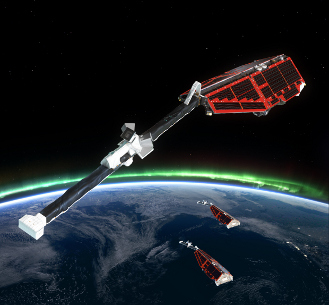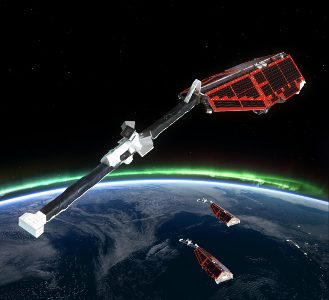HUN-REN EPSS researchers have completed another successful ESA project

The primary objective of the project, which concluded in late 2024, was to characterise ultra-low frequency (ULF) wave activity based on magnetic measurements made by the European Space Agency (ESA) Swarm satellites. The Swarm satellites have been in low Earth orbit in the upper ionosphere at an altitude of about 450 km, since their launch in 2013. Their primary mission involves conducting magnetic and plasma measurements. However, these measurements also indirectly yield valuable information about several key aspects of the electric currents in the Magnetosphere-Ionosphere system, insights into the movement of plasma, density of the neutral atmosphere and total electron content of the plasmasphere, among others. The current development was commissioned by ESA’s Swarm Data, Innovation, and Science Cluster (DISC), recognising the decades of research conducted by the EPSS magnetosphere research group in this field. The resulting products (ULF and PC1) provide a detailed description of the various wave events detected and identified in the Swarm satellite data through a fully automated process. Beyond enhancing our understanding of these phenomena, the data products contribute to the advancement of space weather forecasting, as the characterised waves play a crucial role in the acceleration and loss of high-energy particles that pose threats to satellites. HUN-REN EPSS became a member of the ESA Swarm DISC in the fall of 2022, marking the first membership in the region. Before this recent development, EPSS staff had already engaged in developing Swarm data products, including the characterisation of the ionospheric plasma trough and plasmapause (MIT and PPI products).
The project is available on the ESA website:
All Swarm data products are available at:




